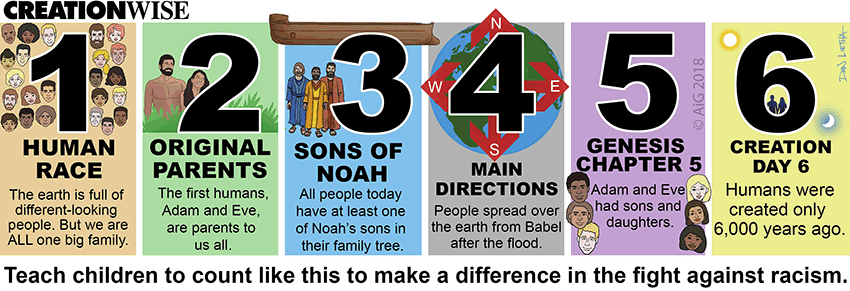Children’s SUNDAY STUDY: Biblical Answers to Racism

Compiled from AnswersInGenesis.org
In LUKE 10:25–37, Jesus tells the parable of the Good Samaritan to show what it means to love your neighbor as yourself.
In the parable, a man is traveling from Jerusalem to Jericho when thieves attack him and leave him on the road severely wounded. A priest and a Levite come by and see the man, but they pass on the other side of the road. But when a Samaritan comes along, he sees the man and has compassion, bandaging his wounds and helping him to an inn where he can receive medical attention. He pays for all the man’s bills.
What makes this story relevant is not only the lesson of kindness, but also the lesson of anti-racism. You see, the man from Jerusalem was a Jew, and the man from Samaria was a half Jew. Jews and Samaritans did not get along because they each perceived themselves as better.
You probably know many people who look different from you. Think about the people on the major continents: Africa, Australia, Asia, Europe, North America, and South America. In each continent and in each country, skin tones, eye shapes and colors, and hair textures vary.
Many people are under the misconception that there are different skin “colors,” like red, black, white, yellow, and so on. But really, we all have the same basic skin color, from the main pigment in our skin called “melanin.” This pigment is a brown color. This means that humans are all brown in color but they have different shades [of brown] from dark to light.
Those people who have a lot of the brown melanin in their skin are usually called black—but they are really dark brown, not black. Those that have much less brown melanin in their skin are usually called white—but they are not white but light brown. Most people in the world are a middle brown shade. If Adam and Eve were both in the middle (middle brown) then they could have had children with dark brown skin and children with very light brown skin in one generation!
At the time of the Tower of Babel, all the people in the world lived in one place (Gen. 11:1-2). Because they were all together, they all spoke the same language, practiced the same culture, and yet, contained a vast gene pool that kept them all looking very different. For instance, a mother and father could have had four (and more!) children that looked nothing alike!
But humans once again rejected God’s Word in which He had told them to “fill the earth” (Gen 9:1). They built a tower at Babel and refused to spread throughout the world (Genesis 11:4). Because they disobeyed Him, God confused their languages (Gen 11:8-9). Entire groups suddenly struggled to communicate with each other. Changing the languages forced the people to separate and inhabit different parts of the world.
As the population split up and people left Babel by their family groups, different characteristics, like the many skin shades, ended up in the various groups, and became more concentrated. Some groups ended up with only dark skin, while others ended up with a light shade of skin—and others with all sorts of shades in between.
As a result, certain dominant characteristics developed in each people group. They formed small gene pools with less genetic variation. Each group had a different mix of genes for various physical features, and because of the small gene pools, specific characteristics like skin shade and eye shape became dominant. Over time, humans started believing that some people groups are better than others. This belief is racism, and it is sinful.
Charles Darwin came up with an explanation (theorized) that man, having evolved from apes, had continued evolving as various races, with some races more developed than others. Darwin classified his own white race as more advanced than those “lower organisms” such as pygmies, and he called different people groups “savage,” “low,” and “degraded.” He wasn’t the first, or the last, to give a biological answer for racism, but by acceptance of his evolutionary proposal, racism increased in great magnitude.
Darwin was wrong. Humans are not split into various races at higher and lower stages of evolution. The Bible makes it clear that God specially created mankind in His image. We are all descendants of Adam, “the first man” (1 Cor. 15:45), and Eve, “the mother of all living” (Genesis 3:20). So only one race exists—the human race.
It’s important to remember that all people living today have a common ancestry through Noah and his wife, and ultimately from Adam and Eve (Gen. 5). We may look different from each other, but we are all part of the same human race! God loves all people and sent His only Son so that we all can have eternal life.
After this I looked, and behold, a great multitude that no one could number, from every nation, from all tribes and peoples and languages, standing before the throne and before the Lamb, clothed in white robes, with palm branches in their hands (REVELATION 7:9)
†††
